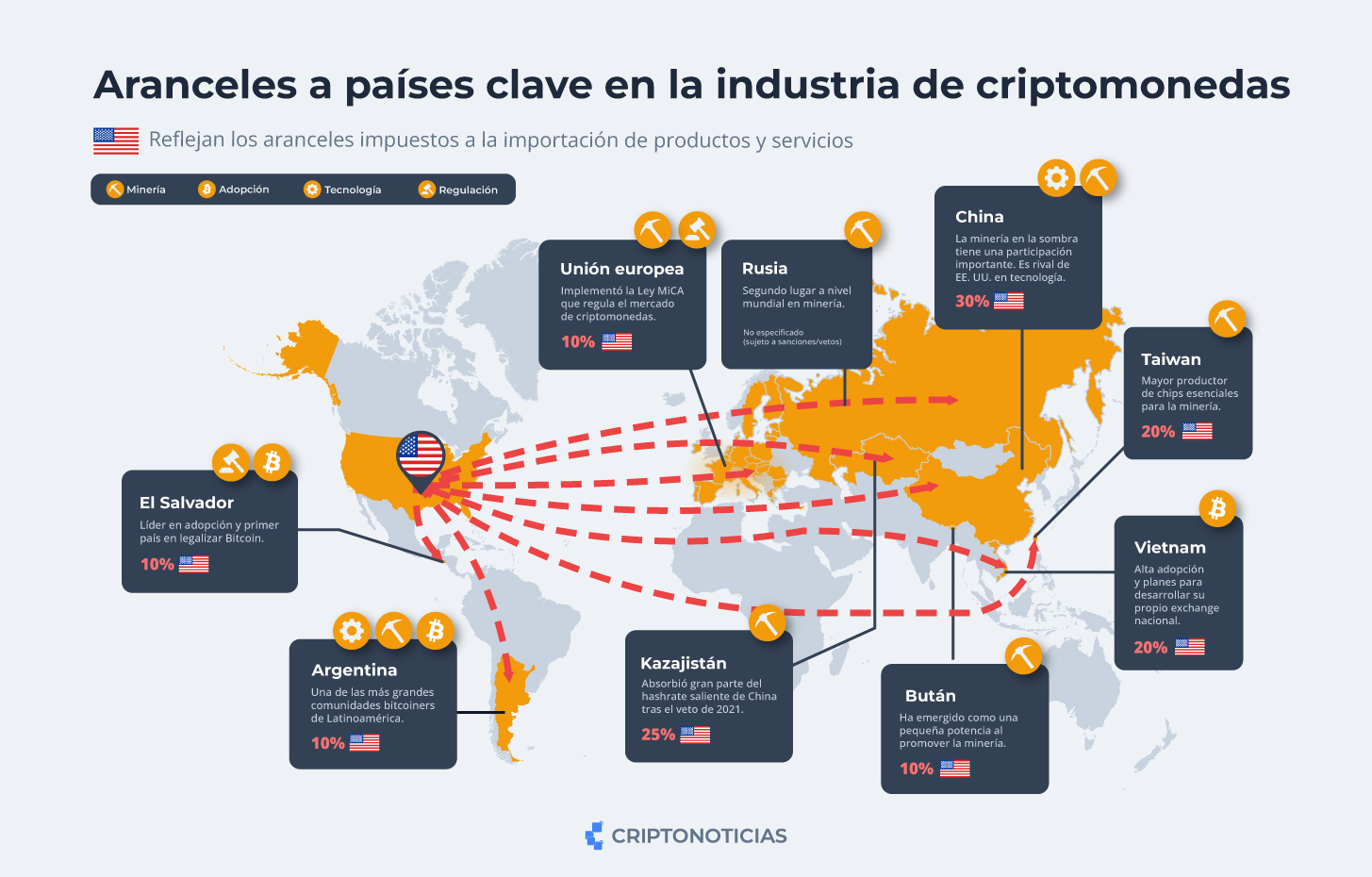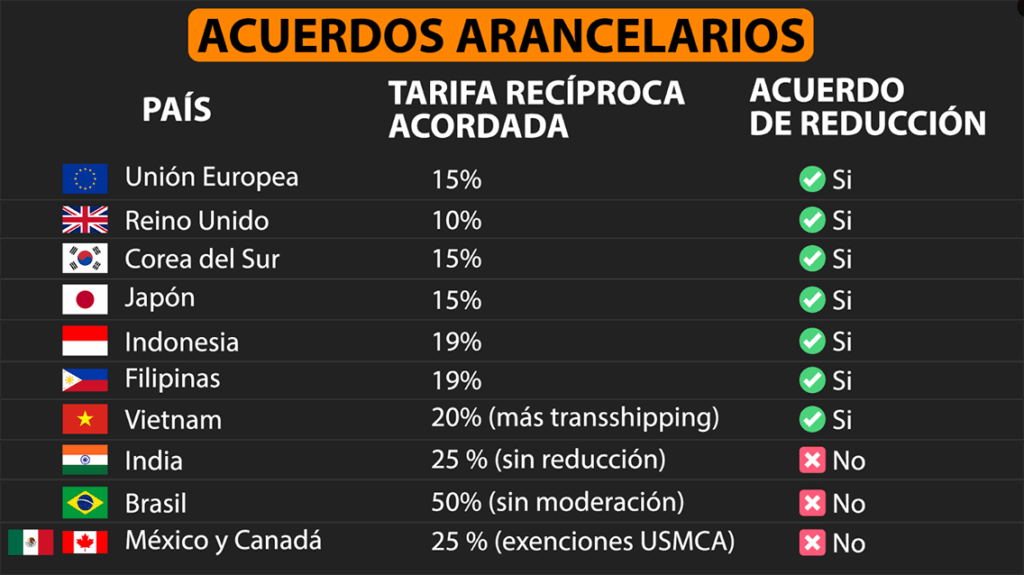The mining companies of the US will face higher costs and lower gain margins.
Paradoxically, economic uncertainty could strengthen Bitcoin as a value refuge.
The new and aggressive commercial policy of President Donald Trump, which imposes universal tariffs on almost all goods imported to the United States, promises to redefine the global economy. However, beyond the visible impact on the prices of consumer goods, this measure of extreme protectionism hides an indirect and deep consequence for one of the most thriving technological sectors such as Bitcoin (BTC) and cryptocurrencies.
The White House, on Thursday, July 31, advertisement a multiple level tariff system. This consists of a base rate of 10% for countries with which the US has a commercial surplus, and a minimum 15% tariff for about 40 nations with which it maintains a deficit.
Therefore, countries like China, Mexico and Canada face even higher rateswhich range between 25% and 35% in certain products, consolidating a break with decades of free trade policies.
The new tariff will enter into force on August 7. And, among other sectors, it will be harmful to the digital asset industry such as Bitcoin, since they are part of an ecosystem that depends on a very tangible physical infrastructure such as mining equipment.
Asic more expensive: the cost of tariffs
The powerful integrated circuits of specific application (ASIC), which are the backbone of the safety and operation of this network, are manufactured goods. And the vast majority of these teams are designed and manufactured in Asia, with China at the head.
This is where tariffs come into play. That is because this essential hardware, when imported to the United States, will be subject to new and high rates, as Cryptonoticia reported.
For Bitcoin mining companies based in the US A drastic increase in its operating costs. Acquire and replace equipment will become significantly more expensive, reducing their profit margins and competitiveness globally.
A high tariff on Chinese goods translates directly into a higher cost of mining equipment. Therefore, this presses the margins of American miners, which in turn could slow the expansion of mining infrastructure in the country.
In the worst case, it could cause a migration of the hashrate (the computational power of the network) towards regions with lower operating costs, weakening the position of the United States as one of the mining centers most important in the world.


Impact on inflation, interest and liquidity rates for markets
Beyond the direct impact on hardware, Tariffs create a wave of macroeconomic uncertainty. The increase in import costs could envive inflation in the United States, complicating the work of the Federal Reserve.
In an environment of high inflation and economic growth slowed down by commercial frictions, investors tend to flee from the highest risk assets, a category in which many still place cryptocurrencies.


However, this situation also presents a double face. This is because commercial tensions erodes confidence in Fiat money, forcing some investors to Adopt Bitcoin as a value shelter.
In that sense, Trump’s protectionist policy could, ironically, strengthen the argument in favor of a global and decentralized financial asset with fixed supply.
All this also reveals the contradiction inherent in the administration policy of Donald Trump. This, on the one hand seeks to foster the leadership of the United States in the Bitcoin and cryptocurrency industry, attracting talent and investment. On the other, commercial barriers are imposed that punish precisely on the sector that tries to promote, more expensive their key infrastructure and making it less competitive.
In short, Trump’s new tariffs are not just a business of physical goods. Represent A tangible obstacle for the digital asset industry in the United Stateswith the potential to reconfigure the global Bitcoin mining map and generate unforeseen economic consequences that will test the resistance and true purpose of the digital asset ecosystem.


